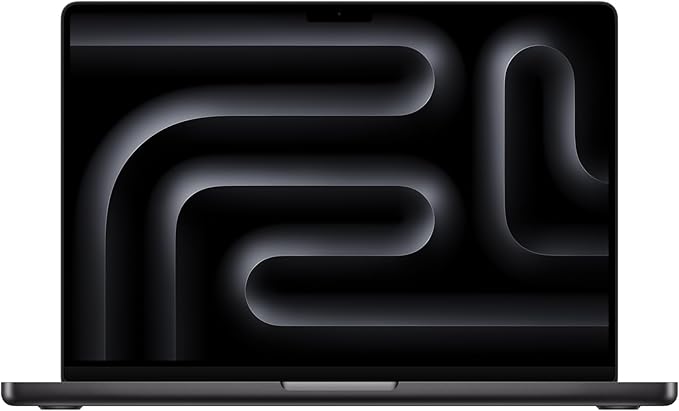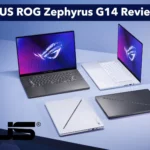Best Laptops for ExoCAD
Unlock seamless performance in your digital dentistry workflow. We’ve analyzed, tested, and compiled the ultimate list of laptops engineered to handle the demanding 3D rendering and processing power of ExoCAD.
Decoding ExoCAD’s Hardware Needs
ExoCAD is a powerful tool, but it requires specific hardware to run smoothly. Understanding these components is the first step to choosing the right laptop and avoiding workflow bottlenecks. Here’s what truly matters for dental CAD/CAM performance.
Processor (CPU)
The engine of your workflow. Prioritize high single-core clock speeds (for manipulating models) and multiple cores (for rendering). Look for Intel Core i7/i9 (12th Gen+) or AMD Ryzen 7/9 (6000 series+).
Graphics Card (GPU)
This is non-negotiable. ExoCAD’s 3D rendering heavily relies on the GPU. An NVIDIA GeForce RTX 3060 / 4060 or higher with at least 8GB of VRAM is essential for handling complex cases and large scans.
Memory (RAM)
Your digital workspace. 16GB is the absolute minimum. We strongly recommend 32GB to smoothly manage large intraoral scan files and run multiple applications without slowdowns. 64GB is for extreme power users.
Storage (SSD)
Speed is key. A fast NVMe SSD drastically reduces loading times for the OS, ExoCAD, and large project files. Aim for at least 1TB to store your cases and software comfortably.
Our Top Laptops for ExoCAD in 2025
Razer Blade 16
Uncompromised power in a sleek chassis. It combines a top-tier CPU and GPU with a stunning display, making it the ultimate tool for professionals who demand the best.
Dell Precision 7680
Built for reliability and certified performance. This workstation offers robust security, premium support, and configurations with powerful components to ensure stable, long-term use.
ASUS ROG Zephyrus G16
Incredible performance without the premium price tag. It packs a powerful punch with the latest Intel and NVIDIA hardware, offering the best performance-per-dollar for ExoCAD.
Interactive Performance Comparison
Use the dropdown below to visually compare our top picks on key performance metrics. These scores are relative, designed to help you quickly assess the strengths of each machine for ExoCAD-specific tasks.
In-Depth Reviews
1. Razer Blade 16 – Best Overall
The Razer Blade 16 is an absolute powerhouse that ticks every box for a demanding ExoCAD user. Its strength lies in its ability to pack the most powerful consumer hardware into a meticulously crafted aluminum chassis without compromising on thermal performance. The vapor chamber cooling system is crucial, as it allows the Intel Core i9 CPU and NVIDIA RTX 40-series GPU to maintain high clock speeds during long rendering sessions, preventing the thermal throttling that can plague lesser laptops.
Key Specifications:
- CPU: Intel Core i9-14900HX
- GPU: NVIDIA GeForce RTX 4070 / 4080 (8GB/12GB VRAM)
- RAM: Up to 64GB DDR5
- Storage: Up to 4TB NVMe SSD
- Display: 16″ QHD+ (2560×1600) 240Hz Mini-LED
Pros & Cons:
- Top-tier CPU and GPU performance
- Exceptional build quality
- Stunning, color-accurate display
- Excellent cooling system
- Premium price point
- Can be loud under full load
2. Dell Precision 7680 – Professional Workstation
For professionals who prioritize reliability, support, and certified drivers, the Dell Precision 7680 is the gold standard. While it can be configured with similar high-end components as gaming laptops, its main selling point is its stability. The NVIDIA RTX Ada Generation GPUs (formerly Quadro) come with ISV certifications, guaranteeing compatibility and stability with professional software like ExoCAD. The robust build, extensive port selection, and enterprise-grade security features make it an ideal choice for a clinical or lab environment.
Key Specifications:
- CPU: Intel Core i7/i9 (13th Gen vPro)
- GPU: NVIDIA RTX 2000/3500/5000 Ada Generation
- RAM: Up to 128GB DDR5 (ECC optional)
- Storage: Up to 12TB NVMe SSD (multiple drives)
- Display: 16″ FHD+ or UHD+ PremierColor
Pros & Cons:
- Exceptional reliability and build quality
- ISV-certified drivers for stability
- Extensive configuration options
- Excellent security and support
- Higher cost for equivalent raw power
- Heavier and bulkier design
3. ASUS ROG Zephyrus G16 – Best Value
The ASUS ROG Zephyrus G16 hits the sweet spot between performance, portability, and price. It leverages its gaming DNA to provide an excellent thermal solution for the latest Intel Core Ultra CPUs and NVIDIA RTX 40-series GPUs, ensuring you get sustained performance for your ExoCAD workload. While it may not have the tank-like build of a Dell Precision, its chassis is still premium and much more portable. For the professional on a budget who is unwilling to compromise on core performance, the Zephyrus G16 is an unbeatable choice.
Key Specifications:
- CPU: Intel Core Ultra 9 185H
- GPU: NVIDIA GeForce RTX 4060 / 4070 (8GB VRAM)
- RAM: Up to 32GB LPDDR5X
- Storage: Up to 2TB NVMe SSD
- Display: 16″ QHD+ (2560×1600) 240Hz OLED
Pros & Cons:
- Excellent performance for the price
- Beautiful and fast OLED display
- Slim, portable, and professional design
- Great thermal management
- RAM is soldered and not user-upgradable
- Fewer ports than a dedicated workstation
Frequently Asked Questions
Can I use a MacBook for ExoCAD?
While modern MacBooks with Apple Silicon (M1/M2/M3) are very powerful, ExoCAD is a Windows-native application. You would need to run Windows through virtualization software like Parallels. This can lead to performance issues, driver incompatibilities, and is not officially supported by ExoCAD. For a hassle-free and fully optimized experience, we strongly recommend using a Windows-based laptop.
Do I need an NVIDIA Quadro (RTX Ada) or GeForce GPU?
For most ExoCAD users, a high-end NVIDIA GeForce RTX GPU (like the 4060, 4070, or 4080) offers significantly better performance for the price. The professional RTX Ada Generation (formerly Quadro) cards are designed for users who need ISV-certified drivers for a suite of professional applications and value maximum stability over raw speed. If ExoCAD is your primary demanding application, a GeForce card is the smarter financial choice.
How much RAM is truly enough for large dental scans?
While ExoCAD’s minimum requirement is 16GB, this can become a bottleneck quickly when working with high-resolution, full-arch scans or multiple cases simultaneously. 32GB of RAM is the recommended sweet spot. It provides ample headroom for complex models and multitasking with other software (like patient management or imaging software) without system slowdowns. 64GB is beneficial for labs that handle extremely complex restorative cases or extensive implant planning.











